Exploring UV Light Bulbs and Vitamin D Production
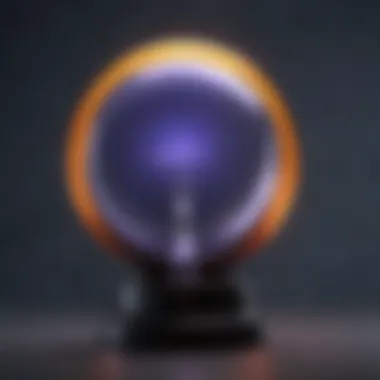

Intro
Understanding how we acquire vitamin D is essential for both health professionals and individuals alike. While our bodies primarily synthesize this vital nutrient through exposure to sunlight, not everyone has the luxury of basking in natural rays all year round. This is particularly relevant in regions plagued by long winters or frequent cloud cover. In such scenarios, UV light bulbs step in with a potential solution for boosting vitamin D levels.
This article explores the intersection between UV light bulbs and vitamin D synthesis, delving into the science that underpins photobiology. Through this exploration, we aim to provide clarity on the various types of UV bulbs available, their effectiveness compared to natural sunlight, and the broader implications for health and wellness.
Background and Context
Overview of the Research Topic
Vitamin D, often referred to as the "sunshine vitamin," plays a critical role in several bodily functions, including calcium absorption and immune response. Without sufficient vitamin D, individuals can face a plethora of health issues, ranging from osteoporosis to impaired immune function. Consequently, understanding how UV light bulbs can artificially stimulate vitamin D production has become an increasingly important area of study.
The significance of UV light in vitamin D synthesis lies in its ability to trigger the transformation of a type of cholesterol in the skin into vitamin D3. When specific wavelengths of UV radiation penetrate the skin, this biochemical reaction occurs. Thus, replicating these conditions with artificial UV sources could serve as a practical alternative to sunlight exposure.
Historical Significance
Historically, the relationship between light and health has been documented for centuries. Ancient civilizations believed in the healing properties of sunlight. More recently, during the 20th century, the importance of vitamin D became apparent, particularly in addressing health deficiencies like rickets among children.
The advancements in technology brought forth the development of UV light bulbs designed specifically to mimic the sunlight spectrum necessary for vitamin D production. Research since then has evolved, leading to a broader examination of these artificial sources as viable solutions to combat vitamin D deficiency.
"Light is life's eternal language."
– Unknown
Key Findings and Discussion
Major Results of the Study
Current research into UV light bulbs generally highlights the efficacy of certain types. The most commonly referenced bulbs are:
- UVB Bulbs: These emit wavelengths between 280-320 nm, directly involved in synthesizing vitamin D. Clinical studies have shown that exposure to these bulbs can increase vitamin D levels in individuals with deficiency.
- Full-Spectrum Bulbs: A bit of misunderstanding surrounds these bulbs, as they often contain both UVA and UVB rays. While they may have broader applications in light therapy and skin health, their role in vitamin D synthesis isn’t as direct as that of UVB bulbs.
Detailed Analysis of Findings
Furthermore, the effectiveness of these bulbs can depend on several factors, including distance from the skin and duration of exposure. Generally, health experts recommend starting with short sessions to minimize risks, such as skin damage.
In exploring the balance between benefits and potential dangers of UV exposure, one must keep in mind that excessive use of UV light could lead to skin conditions or increase the risk of skin cancer. As such, judicious use and adherence to safety guidelines are paramount in harnessing the benefits while mitigating the risks.
As we continue to familiarize ourselves with the nuances of artificial UV light’s role in vitamin D synthesis, the next step involves understanding how individuals can safely integrate these into their routines. Whether through clinical treatments or personal use, ensuring optimal intake of vitamin D becomes paramount for overall wellness.
Understanding Vitamin and Its Importance
Vitamin D is often overlooked in discussions about health and wellness, yet it plays a crucial role in our bodies. Understanding Vitamin D is essential not just for maintaining bone health but also for its influence on our immune system, mood, and overall vitality. Recognizing its importance can help individuals make informed choices about their health regimes, particularly concerning sun exposure and the use of UV light bulbs.
Overview of Vitamin
Vitamin D, sometimes referred to as the "sunshine vitamin," is a fat-soluble vitamin that the body can synthesize upon exposure to ultraviolet (UV) radiation from sunlight. It exists in two primary forms: D2 (ergocalciferol) and D3 (cholecalciferol). While D2 is primarily found in plants, D3 is the more potent form, which our bodies produce when UVB rays hit the skin. This natural mechanism underscores the importance of sunlight in regulating our vitamin D levels. However, in today's world, where lifestyle often limits sun exposure, understanding the role of UV light bulbs becomes essential.
Health Benefits of Adequate Vitamin Levels
Having sufficient vitamin D levels is akin to ensuring a well-tuned engine runs smoothly. Here are a few benefits:
- Bone Health: Vitamin D is vital for calcium absorption, promoting bone density and strength.
- Immune Function: It plays a significant role in enhancing the immune response, helping the body ward off infections and diseases.
- Mental Health: Low levels of vitamin D have been linked to mood disorders, including depression and anxiety.
- Chronic Disease Prevention: Research suggests that adequate vitamin D levels may reduce the risk of certain chronic conditions, including heart disease and some cancers.
"Adequate vitamin D is not just a nice-to-have; it's essential for long-term well-being."
It is evident that Vitamin D offers a multitude of advantages, serving as a keystone in maintaining physical and mental health. However, many individuals fall short of the recommended levels, making awareness and education paramount.
Consequences of Vitamin Deficiency
The repercussions of insufficient vitamin D are far-reaching and can impact various aspects of health. The common consequences include:
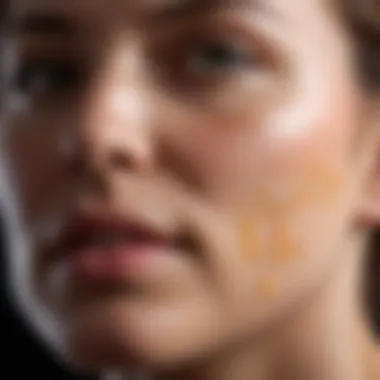
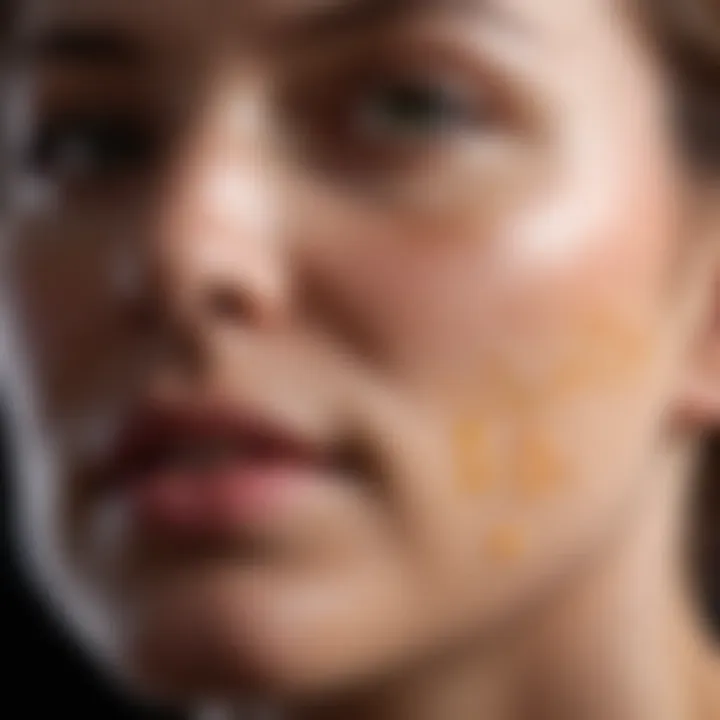
- Increased Risk of Bone Disorders: Insufficient vitamin D can lead to conditions such as rickets in children and osteomalacia or osteoporosis in adults, making bones fragile and more prone to fractures.
- Weakened Immune System: A deficiency can impair the body's ability to fight off infections, leaving individuals vulnerable to illnesses.
- Cognitive Impairments: There is evidence suggesting that low vitamin D levels may be linked to an increased risk of cognitive decline and disorders such as Alzheimer's.
- Muscle Weakness: Low levels can contribute to muscle weakness, impacting mobility and strength.
In summary, understanding the importance of vitamin D is critical for anyone looking to optimize their health. It serves not only as a protective factor against numerous health issues but also enhances overall well-being. As the article progresses, we'll explore how UV light bulbs can aid in vitamin D synthesis, a topic that resonates with the quest for health in modern lifestyles.
The Science of UV Radiation
Understanding the science of UV radiation is key to grasping how UV light bulbs contribute to vitamin D synthesis. This section delves into the different types of UV radiation, each with unique characteristics and effects on human health. It’s essential to distinguish between UVA, UVB, and UVC rays, as each plays distinct roles in biological processes. Moreover, the mechanism of vitamin D synthesis sheds light on how these rays contribute to health, showcasing the importance of mindful exposure.
Types of UV Radiation
UVA
UVA rays are long-wave ultraviolet radiation, comprising about 95% of the UV radiation reaching the Earth's surface. One primary aspect of UVA is its ability to penetrate deep into the skin, affecting the dermal layers.
A key characteristic of UVA is its association with skin aging and wrinkling, but its role in vitamin D synthesis is also notable. Unlike UVB, UVA does not directly stimulate the production of vitamin D; rather, it prepares the skin to absorb UVB rays more effectively.
A unique feature of UVA is that it can penetrate glass, meaning people can be exposed indoors if they are near windows. The advantage of this is that those who use UV light bulbs with a significant UVA component may receive some beneficial effects from these rays. However, overexposure can lead to skin damage and increase the risk of skin cancer.
UVB
UVB rays are shorter in wavelength compared to UVA, making up about 5% of the UV radiation that reaches the Earth. This type of radiation is crucial for vitamin D synthesis as it directly interacts with skin cells to convert 7-dehydrocholesterol to previtamin D3.
One of the standout traits of UVB is its intensity, which varies with the seasons, time of day, and geographic location. This characteristic makes UVB both beneficial and potentially harmful; while it is essential for vitamin D production, too much exposure can lead to sunburn and increased skin cancer risk.
The unique feature of UVB is the narrow spectrum that effectively contributes to vitamin D production, which isn’t matched by other types of radiation. While UVB is beneficial, its intensity means that safety precautions should always be in place to avoid harm from excessive exposure.
UVC
UVC rays are short-wave ultraviolet radiation, which are mostly absorbed by the Earth's atmosphere and do not naturally reach the Earth's surface. The appeal of UVC lies in its germicidal properties; it's effective in killing bacteria and viruses. In terms of vitamin D synthesis, though, UVC does not play a role since it does not penetrate the skin.
A key attribute of UVC is that it can be produced artificially through specific UV light bulbs. These bulbs are primarily used for disinfection rather than health benefits. However, they can be harmful as UVC exposure can cause skin burns or damage to the eyes.
Thus, while UVC may be utilized in controlled environments for its disinfecting qualities, its application for vitamin D synthesis remains non-existent due to lack of penetration and the potential health risks involved.
Mechanism of Vitamin Synthesis
The mechanism of vitamin D synthesis involves a series of steps that begin when UVB rays penetrate the skin, triggering a complex biochemical process. When these rays hit the skin, they excite 7-dehydrocholesterol, leading to its transformation into previtamin D3. This substance then undergoes thermal isomerization to become vitamin D3, or cholecalciferol. From here, the liver converts vitamin D3 into calcidiol, which is then further processed in the kidneys into calcitriol, the active form of vitamin D in the body.
This process not only highlights the importance of UVB in vitamin D production but also emphasizes why balance is essential in exposure. Too much UV radiation can lead to detrimental effects, while too little can result in deficiencies detrimental to health.
By understanding the science of UV radiation and its implications on vitamin D synthesis, individuals can make informed decisions about their exposure to UV light, ensuring they harness its benefits while minimizing risks.
UV Light Bulbs: Types and Functions
When it comes to synthesizing vitamin D, UV light bulbs play a critical role. These artificial sources of ultraviolet light can be invaluable tools, especially in regions where sunlight is scarce. Understanding the various types of UV light bulbs and their functions can guide individuals in selecting the most suitable option for their health and wellness needs.
Types of UV Light Bulbs
Fluorescent Bulbs
Fluorescent bulbs are known for their energy efficiency and ability to emit UV light effectively. They generate light by passing an electric current through a gas, which causes the gas to emit ultraviolet radiation. This type of bulb is often used in home installations and professional settings because they produce a significant amount of UVB light, which is crucial for vitamin D synthesis.
A key characteristic of fluorescent bulbs is their compact design, which enables flexibility in placement. However, one unique feature worth noting is the presence of phosphor coating inside the bulb, which transforms UV light into visible light. While this is generally an advantage for various applications, it dilutes the UV output somewhat, meaning users must monitor exposure time closely to ensure adequate vitamin D synthesis.
Halogen Bulbs
Halogen bulbs stand out due to their high-intensity light and very efficient energy consumption. Typically used for spotlights or task lighting, halogen bulbs produce a broad spectrum of UV radiation, including both UVA and UVB ranges. Their ability to generate heat along with light allows for rapid heating in a controlled environment, making them a popular choice for temporary exposure settings.
The defining characteristic of halogen bulbs is their longevity and superior color rendering ability compared to standard incandescent bulbs. However, due to their increased heat output, safety measures should be strictly observed to avoid skin burns or damage to materials around them. Their specific application makes them ideal in controlled environments where vitamin D production is being monitored closely.
LED Bulbs
LED bulbs are the talk of the town when it comes to energy efficiency and durability. Unlike other types of bulbs, LEDs emit light through electronic devices and produce less heat. This makes them a safe option for various applications, including those focused on health. Some specialized LED bulbs are designed to produce specific wavelengths of UV light, primarily UVB, contributing to vitamin D synthesis effectively.
One of the salient features of LED bulbs is their lifespan. They can last up to several years with regular use, significantly reducing replacement costs and effort. However, it’s essential to verify the UV output, as standard LED bulbs do not emit UV light unless specified for that purpose. This means a little homework is necessary to ensure you’re getting the right LED model that actively supports vitamin D production.


Specialized UV Bulbs for Vitamin Production
In the realm of UV light bulbs, there are also specialized devices specifically engineered for vitamin D production. These bulbs are designed to emit UV radiation at the levels that best stimulate the skin’s natural processes for vitamin D synthesis, focusing primarily on UVB wavelengths.
It's crucial to consider that the efficacy and safety of using these specialized bulbs can vary. Product quality, distance from the bulb, and exposure time all play significant roles in the effectiveness of these UV bulbs.
"For individuals aiming to optimize their vitamin D synthesis indoors, using specialized UV light bulbs can be a game changer, especially in winters or regions with less sunlight. "
When selecting any UV bulb, understanding its type and functionality can help both in maximizing health benefits and in mitigating risks associated with improper usage.
Considerations for Using UV Light Bulbs
When it comes to harnessing the benefits of UV light bulbs for vitamin D synthesis, there are numerous factors to take into account. This section delves into recommended exposure times, essential safety measures, and the potential risks that come with artificial UV exposure. Understanding these considerations not only enhances the effectiveness of UV light in supporting vitamin D levels but also mitigates health risks.
Recommended Exposure Times
Determining the right amount of time to spend under UV light bulbs is crucial. More isn’t always better. Research suggests that about 15 to 30 minutes of exposure to a UVB light source is often adequate for most individuals to produce sufficient amounts of vitamin D. However, this can greatly vary depending on skin type, the intensity of the UV light, and the distance from the bulb.
For instance, fair-skinned individuals may synthesize vitamin D much faster than those with darker skin tones, leading to potentially higher vulnerability to burns. Variations in intensity also matter, as bulbs designed specifically for vitamin D production emit different wavelengths compared to standard fluorescent lights. It’s wise to assess personal skin responses and adjust timing accordingly.
"Moderation is key. Just like the sun on a hot day, too much exposure to UV bulbs can do more harm than good."
Safety Measures and Precautions
Using UV light bulbs involves more than just turning them on and enjoying the warmth. Adhering to safety measures can reduce many adverse effects commonly associated with UV radiation. Here are essential precautions to consider:
- Protective Eyewear: Regular sunglasses may not offer sufficient protection. Invest in shields specifically designed to protect your eyes from UV radiation.
- Skin Protection: Always keep an eye on your skin. Applying broad-spectrum sunscreen can help protect against harmful rays. Even with UV bulbs, UVA and UVB rays can cause skin damage.
- Maximize Distance: Maintain a distance of at least 1-2 meters from the bulb. This not only decreases the intensity but also helps you control exposure times more effectively.
- Observe Your Skin: Monitoring your skin's reaction is essential. If you notice flushing, it’s best to dial back your exposure.
Potential Risks of Artificial UV Exposure
While UV light bulbs can aid in vitamin D production, they also harbor certain risks which shouldn't be ignored. Becoming aware of these potential hazards can aid in making informed decisions. Here are some notable risks associated with artificial UV exposure:
- Skin Cancer: Prolonged exposure can increase the risk of skin cancers, including melanoma. It’s important to balance benefits against potential long-term scourges.
- Premature Aging: UV radiation can lead to skin aging and pigmentation, which often manifests as wrinkles or sunspots even at younger ages.
- Eye Damage: Continuous exposure without proper eye protection can cause cataracts or other serious ocular conditions.
- Immune Suppression: Strangely enough, too much exposure to UV light can suppress the immune response causing ramifications on overall health.
Understanding these considerations emphasizes the need for caution and strategy when integrating UV light bulbs into wellness routines. Balancing vitamin D acquisition while protecting oneself ensures that the benefits of UV light bulbs outweigh the risks.
Evaluating the Effectiveness of UV Light Bulbs
When discussing Vitamin D synthesis, it is crucial to assess the role of UV light bulbs in this process. There is a growing interest surrounding artificial sources of UV light, particularly as many individuals do not receive sufficient sunlight. Evaluating how effective these bulbs are compared to natural sunlight helps us understand their potential contributions to maintaining adequate Vitamin D levels.
Comparative Studies on UV Bulbs and Natural Sunlight
Research has increasingly focused on comparing the effects of UV light bulbs with the natural rays of the sun. A key aspect is determining how well these bulbs mimic the sun's rays, specifically in producing Vitamin D. In general, UVB rays are responsible for the synthesis of Vitamin D, which is where most studies draw their focus.
A notable study conducted by some European researchers compared the efficacy of several types of UV bulbs with natural sunlight.
- Fluorescent tubes demonstrated the ability to induce Vitamin D production but often fell short compared to direct sunlight exposure. These tubes primarily emit UVA radiation, which doesn’t contribute to Vitamin D synthesis as effectively as UVB.
- Ceramic halide bulbs, on the other hand, emitted a more favorable balance of UVB, leading to higher Vitamin D levels in participants over time.
- Several findings also highlighted that the intensity and duration of exposure play significant roles. Users in controlled environments utilizing UV bulbs—with appropriate shielding to avoid overexposure—reported increases in Vitamin D similar to those seen with sun exposure.
"The right UV bulb can serve as a substitute for sunlight, but it’s essential to find a balance to avoid adverse effects like skin damage."
User Experiences and Recommendations
User experiences provide essential insight into how practical and effective UV light bulbs can be for Vitamin D synthesis. Many users have reported significant changes in their health after incorporating UV bulbs into their daily routines. These insights help highlight the effectiveness, recommended usage, and safety measures of using UV light.
- Positive Feedback: Users have often noted improvements in their mood and energy levels, especially during winter months when sunlight is scarce. Increased Vitamin D levels from using UV lamps were identified as a key factor.
- Usage Tips: Users recommend not over-relying on these bulbs. Many find that limiting exposure—similar to sunbathing without risking sunburn—yields better results. Experts often suggest a window of 10 to 30 minutes a few times a week is ideal for most individuals.
- Buying Choices: Many consumers gravitate toward bulbs specifically designed for Vitamin D production, such as certain halogen models.
While it is easy to get swept away in the benefits, there are also caveats based on user reports. Some users experienced skin irritation or eye strain when exposure times were not carefully monitored. Therefore, consulting with health professionals is always a sound approach before starting any new regimen involving UV light.
Current Research and Developments
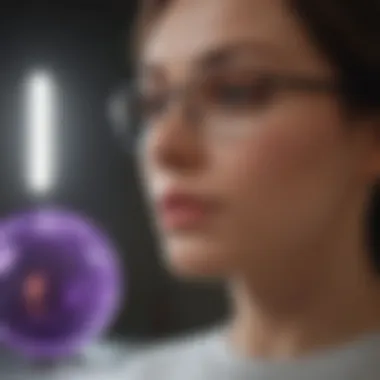
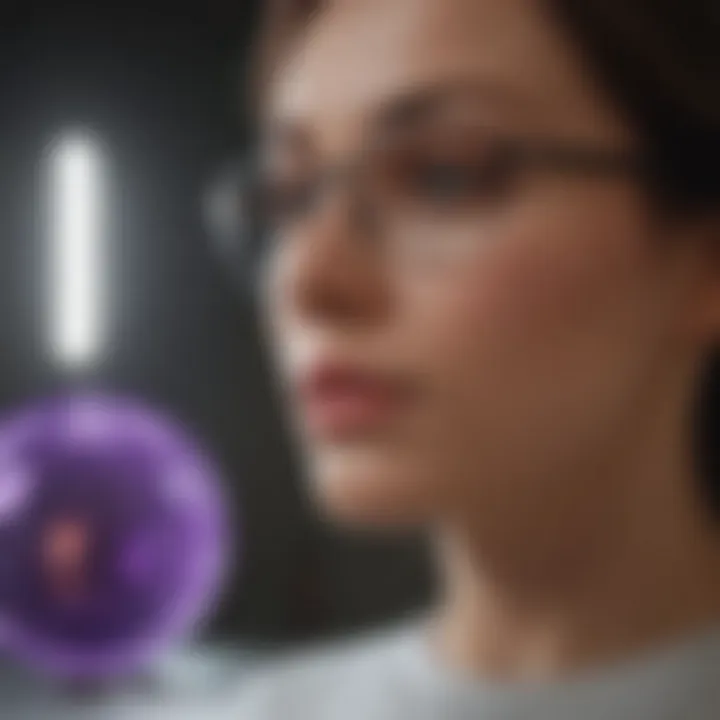
Research surrounding the effectiveness of UV light bulbs in vitamin D synthesis is progressing at a steady pace. This development transcends mere academic interest; it carries profound implications for public health, especially for individuals living in regions with limited sunlight. As the connections between UV exposure and vitamin D levels become clearer, understanding these advancements is crucial for stakeholders—from researchers to health professionals to the general public. Institutions are looking into new technologies designed to optimize vitamin D production mimicking the sun more accurately.
Recent Advances in UV Technology
Recent technologies in UV light bulbs have emerged as potential game changers. Researchers are focusing on how to craft bulbs that closely replicate the specific wavelengths of sunlight responsible for producing vitamin D in human skin. Traditional fluorescent bulbs, while functional, can lack a precise focus on those critical UVB rays.
One notable advance is the development of UV LED bulbs that emit targeted UVB wavelengths without the excess heat and energy consumption typical of older models. Countless laboratory studies showcase that these new types of bulbs not only provide the necessary wavelengths for vitamin D synthesis but do so with greater energy efficiency. As a result, less power is wasted, and the longevity of these lights is significantly enhanced.
"The striking advance in UV technology changes the playing field for indoor vitamin D synthesis, giving users a practical tool against deficiency."
In hospitals and clinics, portable UV devices are now utilized for patients who cannot get adequate sun exposure due to health issues or geographical barriers. Studies reveal positive outcomes from patients utilizing these devices, not only for vitamin D production, but also for overall skin health due to their capacity to eliminate certain pathogens.
Future Directions in Vitamin Research
Looking ahead, the trajectory of vitamin D research is poised for expansion. Ongoing investigations will further examine the exact parameters of safe and effective UV exposure. A primary aim is to conclude optimal durations for different skin types while also considering the impact of various UV light technologies. This includes exploring how environmental factors—like air quality and altitude—may alter the effectiveness of UV light bulbs in vitamin D synthesis.
Moreover, researchers are studying potential interactions between artificial UV exposure and existing health conditions. For instance, the relationship between UV exposure and skin cancer risk is continuously evolving, necessitating a more nuanced understanding as we incorporate UV light into health regimes.
A promising line of inquiry involves combining UV light therapy with dietary or supplemental vitamin D intake. Exploring how these two channels might work together could lead to synergistic benefits.
Integrating UV Light into Health Regimes
To maximize the benefits of vitamin D synthesis, understanding how to incorporate UV light effectively into our health and wellness routines is essential. As many of us find ourselves indoors more than ever, UV light bulbs are emerging as a viable solution to supplement our vitamin D levels. However, striking the right balance and implementing this technology mindfully is paramount to ensure safety while reaping its considerable benefits.
Balancing Sunlight and UV Light Exposure
The human body thrives when given a proper balance of sun exposure and artificial UV light. Not only does natural sunlight provide ample vitamin D, but it's also significant for mental health and overall well-being. The challenge arises in seasons with limited sunlight or during long stretches spent indoors.
By integrating UV light bulbs into daily routines, individuals can salvage some of those crucial UV rays that might be lost.
- Recommended Practices:
- Timing: Aim for short, controlled sessions with UV light bulbs, akin to brief outdoor sunbathing.
- Monitoring: Keep tabs on skin reactions, much like one would when adjusting sun exposure.
- Complementing Sunlight: Use these bulbs on cloudy days or during winter months.
"Too much of a good thing can be detrimental, especially when it involves UV exposure; moderation remains key."
In concentrating on both sunlight and artificial sources, we create a tapestry of vitamin D availability that adapts seasonally and personally.
Adopting a Holistic Approach to Vitamin Intake
Vitamin D isn't just about UV exposure; it calls for a multifaceted approach. Integrating dietary sources, supplementation, and responsible UV light exposures can cultivate robust vitamin D levels.
- Dietary Sources: Think beyond sunshine. Fatty fish like salmon and mackerel, fortified dairy products, and egg yolks are rich in vitamin D.
- Supplements: For those unable to secure sufficient vitamin D from sunlight or diet, supplementation becomes a viable alternative.
- Types: Options like vitamin D2 and D3 are available in various forms, like capsules and gummies.
- Consultation: It's wise to consult with healthcare professionals to assess individual needs based on lifestyle and health.
A holistic strategy enhances resilience against deficiencies. By considering other sources and methods, individuals can cultivate a truly sustainable approach to vitamin D health.
Adopting this comprehensive perspective, merging lifestyle choices with measured exposure to UV light, grants a pathway not just to physical health but also to brighter days ahead.
End
The exploration of UV light bulbs and their role in vitamin D synthesis culminates in an understanding of vital health implications. As we have discussed, maintaining adequate levels of vitamin D is crucial for bone health, immune function, and overall well-being. Artificial UV sources present a viable option for individuals, especially in regions where natural sunlight is scarce or during the colder months when sunlight exposure is limited. There exists a unique intersection between technology and health that may augment vitamin D levels through driven methodologies.
Summary of Key Insights
Continuing from our examination, several pivotal points emerge:
- Vitamin D is essential for various physiological functions, and its deficiency can lead to serious health issues.
- UV light bulbs serve as an alternative to natural sunlight, enabling our bodies to synthesize vitamin D effectively.
- Different types of UV bulbs, notably fluorescent, halogen, and LED, come with varying spectrums, impacting the efficacy of vitamin D production.
- Safe exposure practices are paramount, given the potential risks associated with artificial UV light, including skin damage or increased cancer risk.
"Understanding the right balance between sunlight and artificial sources can empower individuals to take charge of their health effectively."
Implications for Future Practice
The implications of integrating UV light bulbs for vitamin D synthesis stretch across various fields, including healthcare, wellness practices, and public health policies. Adopting a strategic approach when using these technologies can lead to positive outcomes, especially for vulnerable populations who are more at risk of deficiency.
- Future studies may benefit from honing in on the long-term effects of artificial UV exposure, examining dosage and frequency patterns to optimize health benefits.
- Educating the public on safe usage and the significance of maintaining proper vitamin D levels could prove essential.
- Healthcare professionals might consider new protocols that incorporate UV light exposure into routine recommendations, particularly for individuals residing at latitudes with limited sunlight.







